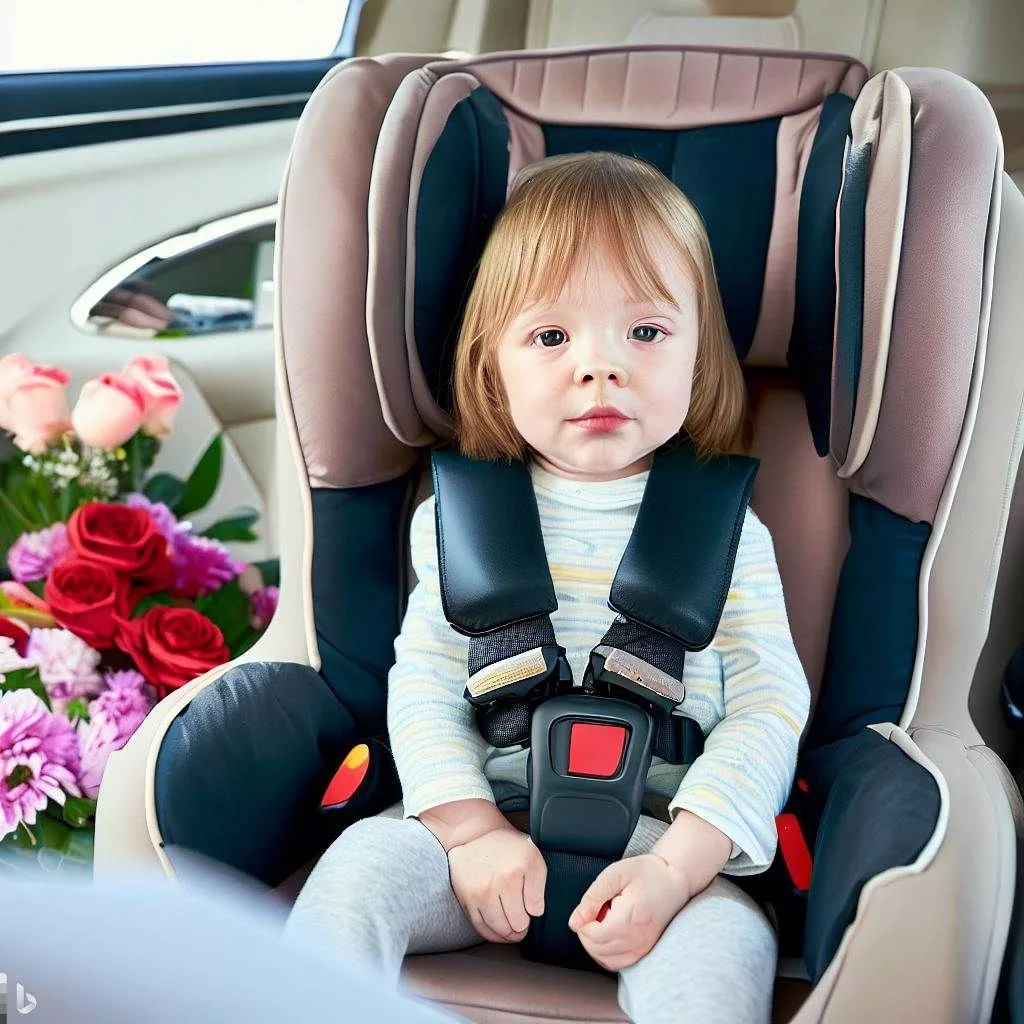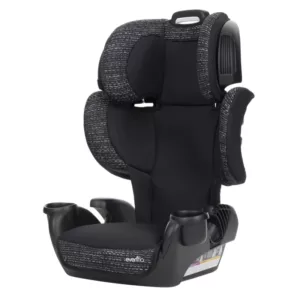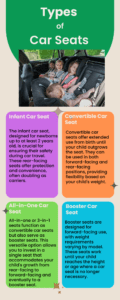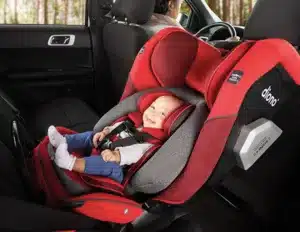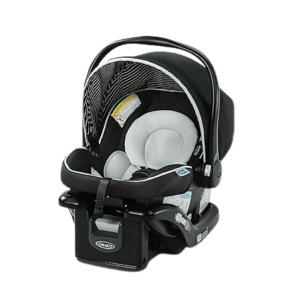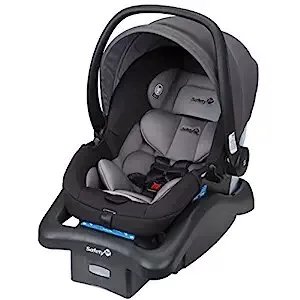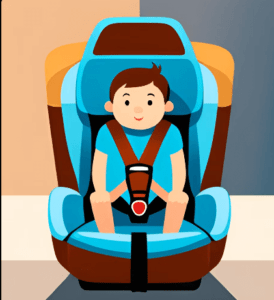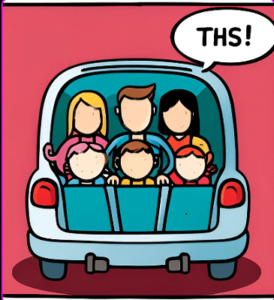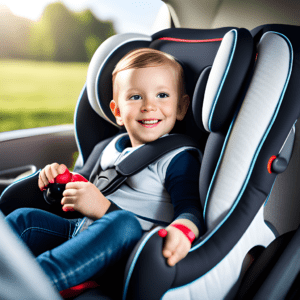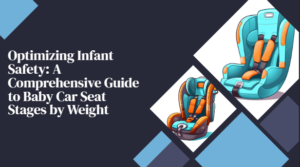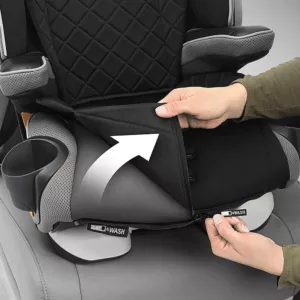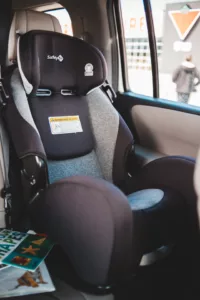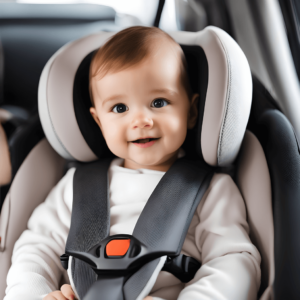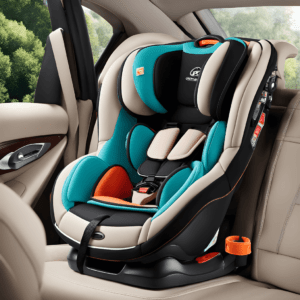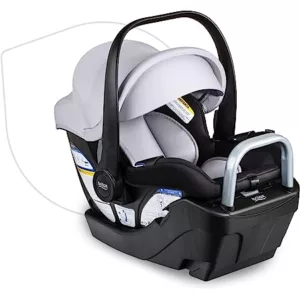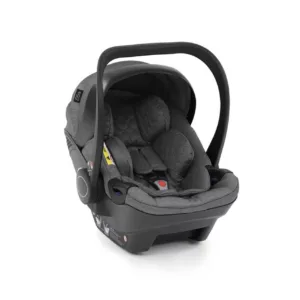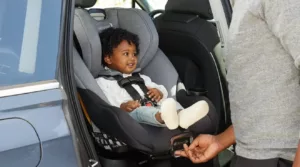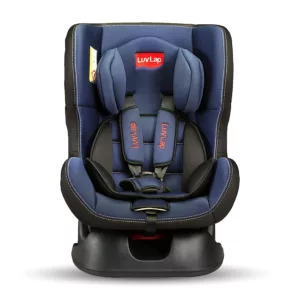Discover the ease of Cosco Car Seat Installation with our step-by-step guide. Learn how to install your car seat in just minutes securely.
Thank you for reading this post, don't forget to subscribe!7 Effortless Steps to Master Cosco Car Seat Installation:
Here are seven steps for the installation of a Cosco Car Seat, designed to be simple and effective:
Read the Manual
- Start by carefully reading the Cosco car seat manual. Each model can have specific features and installation requirements.
- Tip: Highlight or note key points in the manual, especially about installation angles, weight limits, and the use of built-in level indicators.
Table of Contents
ToggleChoose the Right Location
- The safest place for a car seat is generally in the back seat of the car, away from active airbags.
- Tip: If your vehicle has the option, use the middle seat as it is the furthest from side impacts.
Position the Car Seat
- Place the Cosco car seat in the chosen location. Ensure it’s facing the correct direction: rear-facing for infants and younger toddlers.
- Tip: For rear-facing seats, make sure the seat is at the correct recline angle. Most Cosco seats have angle indicators or adjusters.
Secure the Seat with a Seat Belt or LATCH System
- Attach the car seat using the vehicle’s seat belt or the LATCH system. Ensure you’re using the correct belt path.
- Tip: When using the LATCH system, make sure not to exceed the weight limit for the LATCH (this includes the weight of both the car seat and your child).
- Tighten and Lock the Belt
- Pull the seat belt or LATCH straps tight so the car seat is secured with minimal movement.
- Tip: Press down firmly on the seat while tightening the straps for a snug fit. The seat should not shift more than one inch either laterally or longitudinally.
Adjust the Harness
- Adjust the harness so that it fits snugly over your child. In rear-facing seats, straps should be at or below shoulder level, while in forward-facing seats, they should be at or above.
- Tip: Perform the “pinch test” – you shouldn’t be able to pinch any excess webbing at the shoulder after buckling your child in.
Final Check and Adjustments
- Conduct a final check to ensure everything is correctly installed. Double-check the tightness, angle, and harness.
- Tip: It’s a good idea to have your installation checked by a certified car seat safety technician. Many fire stations, hospitals, and police stations offer free car seat checks.
Remember, proper installation and fit are crucial for the safety of your child. It’s always better to take your time and double-check each step. Also, regularly recheck the seat to ensure it remains securely installed, and adjust the harness and seat as your child grows.
Cosco Car Seat Rear Facing Installation:
Installing a Cosco Car Seat, especially in the rear-facing position, is crucial for the safety of your infant or young child. Here’s a detailed guide on the Cosco Car Seat Rear Facing Installation, including smart tips for a secure and safe fit:
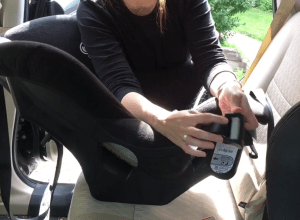
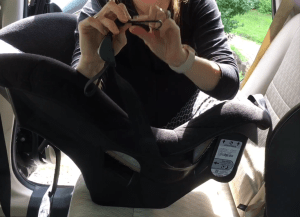
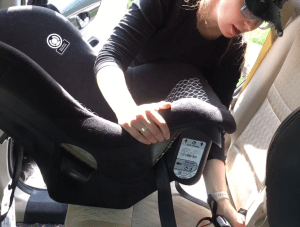
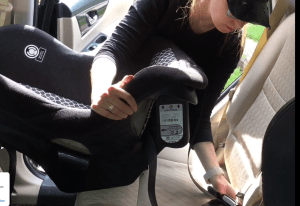
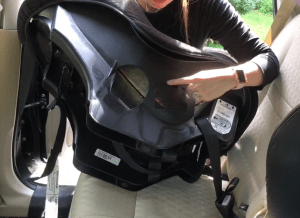

Preparation
- Before starting the Cosco Car Seat Install process, ensure you have read the manual thoroughly. It will give you a clear understanding of the specific requirements for your model.
- Tip: Look for any model-specific installation tips in the manual, as these can be crucial for ensuring safety.
Choosing the Right Location for Rear-Facing Seat
- The safest spot for installing a Cosco Car Seat is typically in the back seat of your vehicle. Ensure it is not positioned in front of a deployed airbag.
- Tip: If possible, choose the middle seat for added protection against side-impact collisions.
Positioning the Seat for Rear-Facing Seat
- Position the car seat in the rear-facing direction, as this is the safest orientation for young children. Make sure the base is flat on the vehicle seat.
- Tip: Use the built-in angle indicators found on many Cosco car seats to ensure the correct recline for your child’s age and size.
Securing the Seat
- Use either your vehicle’s LATCH system or the seat belt to secure the car seat. Ensure that the straps go through the correct rear-facing belt path.
- Tip: If using the seat belt, make sure it’s locked and tightened correctly. The seat shouldn’t move more than an inch in any direction.
Tightening and Adjusting for Rear-Facing Seat
- After attaching the car seat, tighten the straps or belt to ensure the seat is firmly in place.
- Tip: Press down firmly on the car seat while pulling the straps or seat belt to remove slack.
Harness Adjustment
- Adjust the harness so that it fits your child snugly. In the rear-facing position, the straps should be at or below your child’s shoulders.
- Tip: Conduct the pinch test on the harness straps. If the strap can be pinched between your fingers, it is not tight enough.
Double-Checking Installation
- After installing the Cosco Car Seat, give it a thorough check to confirm that everything is in place and secure.
- Tip: It’s always a good idea to have a professional check your installation. Many local fire stations, police stations, and hospitals offer this service.
Regular Checks and Adjustments
- Regularly check the car seat to ensure it remains secure, and adjust the harness as your child grows.
- Tip: Keep the manual handy for quick reference, and check for any recalls or safety notices related to your Cosco Car Seat model.
Remember, the Cosco Car Seat Rear Facing Installation is not just about following steps; it’s about ensuring the utmost safety for your child while travelling. Taking the time to install the seat correctly can make all the difference in ensuring their safety on the road.
Cosco Car Seat Installation Forward Facing:
Installing a forward-facing Cosco car seat involves several steps to ensure the safety and comfort of your child. Here’s a detailed guide:
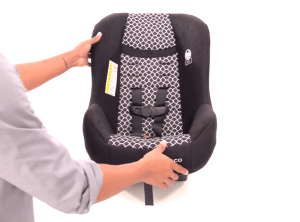
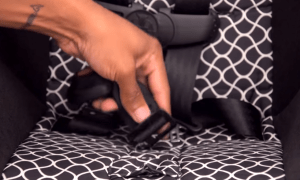
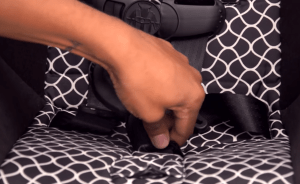
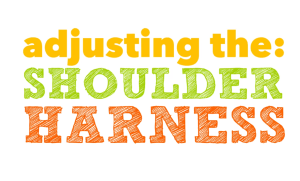
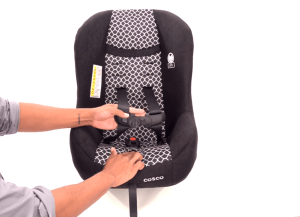
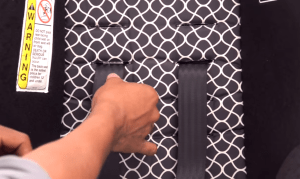
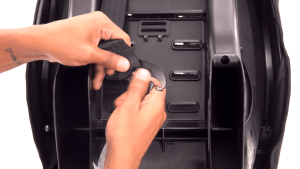
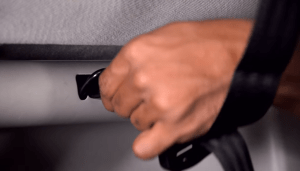
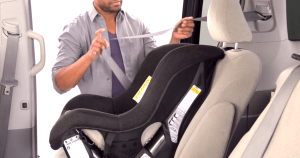
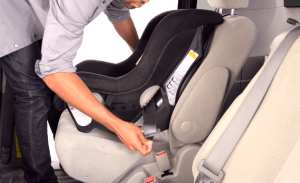
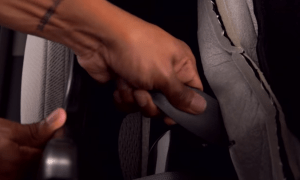
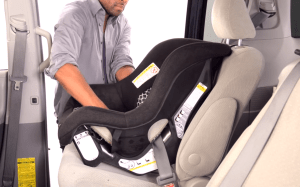
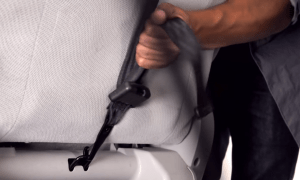
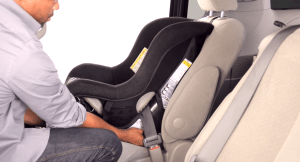
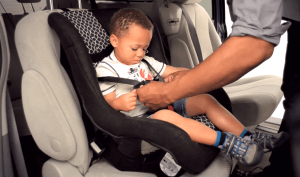
Choosing the Right Location for Forward-Facing Seat:
- Tip: Select the back seat, preferably the middle, for the best protection in a crash. Avoid placing the car seat in front of an airbag.
Orientation for Forward-Facing Seat:
- Position the car seat to face the front of the car.
Securing the Car Seat with a Seat Belt or LATCH System:
For Seat Belts:
- Thread the car seat’s belt path with the vehicle’s seat belt and buckle it.
- Tighten the belt to ensure the car seat doesn’t move more than an inch side to side or forward.
For LATCH System:
- Attach the LATCH connectors to the vehicle’s LATCH anchors.
- Fasten the straps firmly to ensure the seat is securely anchored.
Tip: Check the car seat manual and your vehicle’s manual for specific instructions.
Adjusting the Recline for Forward-Facing Seat:
- Adjust the car seat to the appropriate recline angle for your child’s age and size.
- Tip: Some car seats have built-in angle indicators or adjusters.
Harness Positioning:
- Position the harness so that the straps are at or just above your child’s shoulders.
- Tip: The chest clip should be at armpit level, and the harness should be snug, with no slack.
Final Checks:
- Give a final tug on the car seat to ensure it’s installed tightly.
- Tip: Periodically check the car seat installation and harness fit, as they can loosen over time or as your child grows.
Seeking Professional Help:
- If you’re unsure about the installation, seek help from a certified child passenger safety technician.
Remember, the most important aspect of car seat installation is making sure it’s done correctly to ensure your child’s safety. Always refer to the car seat’s instruction manual and your vehicle’s manual for specific guidelines and requirements.
What are the most common mistakes parents make when installing a forward-facing car seat?
- Incorrect Use of LATCH System or Seat Belt:
- Not using the LATCH system or seat belt properly is a common mistake. Parents might fail to tighten these attachments enough, leading to excessive movement of the car seat.
- Improper Harness Adjustment:
- The harness straps may be too loose, positioned incorrectly, or twisted. The chest clip might be too low or high, which can affect the effectiveness of the harness during a crash.
- Wrong Seat Placement:
- Installing the car seat in the front seat or a spot with active airbags. The safest place for children under 13 is in the back seat.
- Ignoring Car Seat and Vehicle Compatibility:
- Not every car seat is compatible with every vehicle. Parents may overlook the need to check compatibility between the car seat and their specific vehicle model.
- Incorrect Recline Angle:
- Forward-facing car seats have specific recline requirements. Incorrect reclining can impact the child’s comfort and safety.
How can parents ensure the car seat is installed tightly enough?
- The Inch Test:
- After installation, give the car seat a good shake at the base. A properly installed seat should not move more than an inch from side to side or front to back.
- Regular Rechecks:
- Car seats can loosen over time due to the vehicle’s motion. Regularly check and retighten the car seat.
- Use of Built-in Indicators:
- Some car seats come with built-in tension indicators or angle adjusters. Use these tools to ensure proper installation.
- Reading the Manuals:
- Thoroughly read both the car seat manual and the vehicle owner’s manual for specific installation instructions.
- Seeking Professional Assistance:
- If in doubt, consult a certified child passenger safety technician for a car seat inspection.
What are the differences in installation between using a seat belt and the LATCH system?
- Installation Process:
- Seat Belt: Involves threading the vehicle’s seat belt through the car seat’s designated belt path and then buckling and tightening it.
- LATCH System: Requires attaching the car seat’s LATCH connectors to the vehicle’s LATCH anchors, found in the seat bight, and then tightening the straps.
- Tightness and Stability:
- Both systems should secure the car seat tightly with minimal movement. However, the ease of achieving this can vary between the two methods.
- Vehicle Compatibility:
- Older cars might not have LATCH anchors, necessitating the use of a seat belt for installation.
- Weight Limits:
- The LATCH system has a weight limit (child’s weight plus the car seat’s weight), beyond which the seat belt installation is recommended.
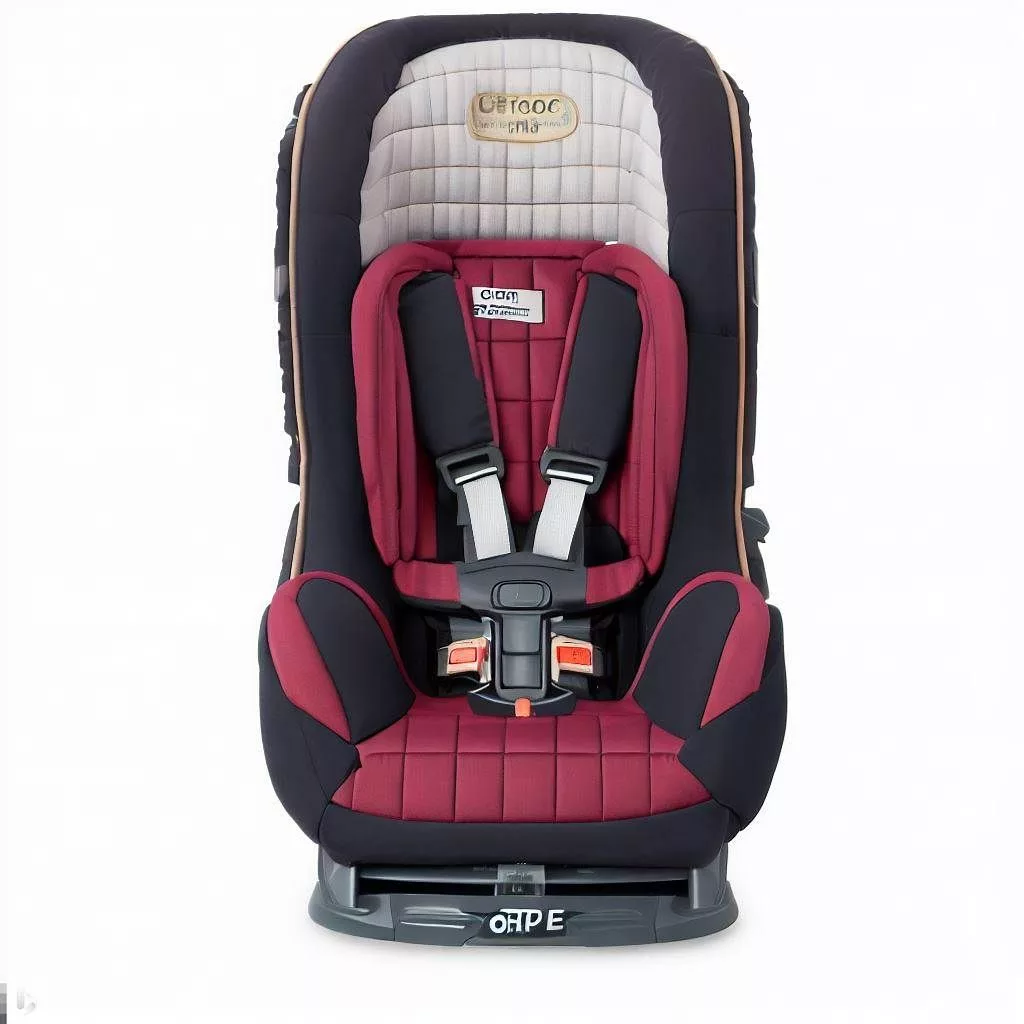
Tips for ensuring the child is properly secured in the forward-facing car seat
- Harness Fit:
- The harness should be snug against the child’s body. There should be no excess slack in the harness straps that allows for pinching.Top of Form
- Correct Harness Slot:
- Use the harness slots that are at or just above the child’s shoulders.
- Chest Clip Positioning:
- The chest clip should be at armpit level to keep the harness straps properly positioned.
- Removing Bulky Clothing:
- Avoid dressing the child in bulky clothing, which can prevent a snug harness fit.
- Regular Adjustments:
- Adjust the harness and headrest as the child grows to ensure a continued proper fit.
By paying attention to these details, parents can significantly enhance the safety and effectiveness of their child’s car seat.
Final Verdict – Cosco Car Seat Installation:
As we conclude our comprehensive guide, “7 Effortless Steps to Master Cosco Car Seat Installation: A Guide Full of Confidence and Ease,” it’s clear that the journey of installing a car seat is more than just a routine task—it’s an essential step in safeguarding your child’s journey, every time. From the meticulous reading of the manual to the final checks and adjustments, each step is imbued with the importance of ensuring the highest safety standards.
We’ve explored the nuances of installation, be it rear-facing or forward-facing, highlighting the pivotal differences between using a seat belt and the LATCH system and providing indispensable tips for securing your child properly. The guide emphasizes not just the ‘how-to’ but also ‘why’ each step matters, ensuring that you’re not just following instructions but understanding the rationale behind them.
Common mistakes have been addressed not to intimidate but to empower you with knowledge. The guide serves as a reminder that in the realm of car seat safety, vigilance is key. Regular checks and adjustments, understanding the nuances of your specific car seat model, and ensuring compatibility with your vehicle are not just recommended practices but essential ones.
As you embark on this journey of installation, remember it’s more than just strapping in a seat—it’s about creating a safe, nurturing environment for your child, even on the road. Whether you’re a new parent or a seasoned pro, this guide stands as your ally, ensuring that every trip with your little one is as secure as it is joyful.
So, take these steps, embrace the process, and embark on every journey with the confidence that comes from knowing your child is seated safely, securely, and comfortably. After all, when it comes to the safety of our children, every detail matters; every step counts.
Frequently Asked Questions about Cosco Car Seat Installation:
- How Do I Know if My Cosco Car Seat is Compatible with My Vehicle?
- This question addresses concerns about the fit and compatibility of the car seat with different vehicle models.
- What Should I Do If My Car Doesn’t Have LATCH Anchors for the Car Seat Installation?
- This is important for owners of older vehicles or those unsure about the LATCH system in their cars.
- How Can I Tell if the Car Seat is at the Right Recline Angle for My Child’s Age?
- Guidance on adjusting the recline angle correctly for different ages and sizes of children is crucial for parents.
- Is It Safe to Use a Second-hand Cosco Car Seat, and What Should I Check Before Using It?
- This question is relevant for parents considering the use of a pre-owned car seat.
- How Often Should I Replace My Cosco Car Seat?
- Understanding the lifespan and replacement timeline of a car seat is key for ongoing child safety.
- Can I Install a Cosco Car Seat in the Front Seat if My Car Does Not Have a Back Seat?
- This question applies to specific vehicle types, like trucks or two-seaters, where the back seat is not an option.
- What Are the Specific Steps for Adjusting the Harness and Buckle Positions as My Child Grows?
- Detailed guidance on adjusting the car seat to accommodate a growing child is essential for long-term use.
